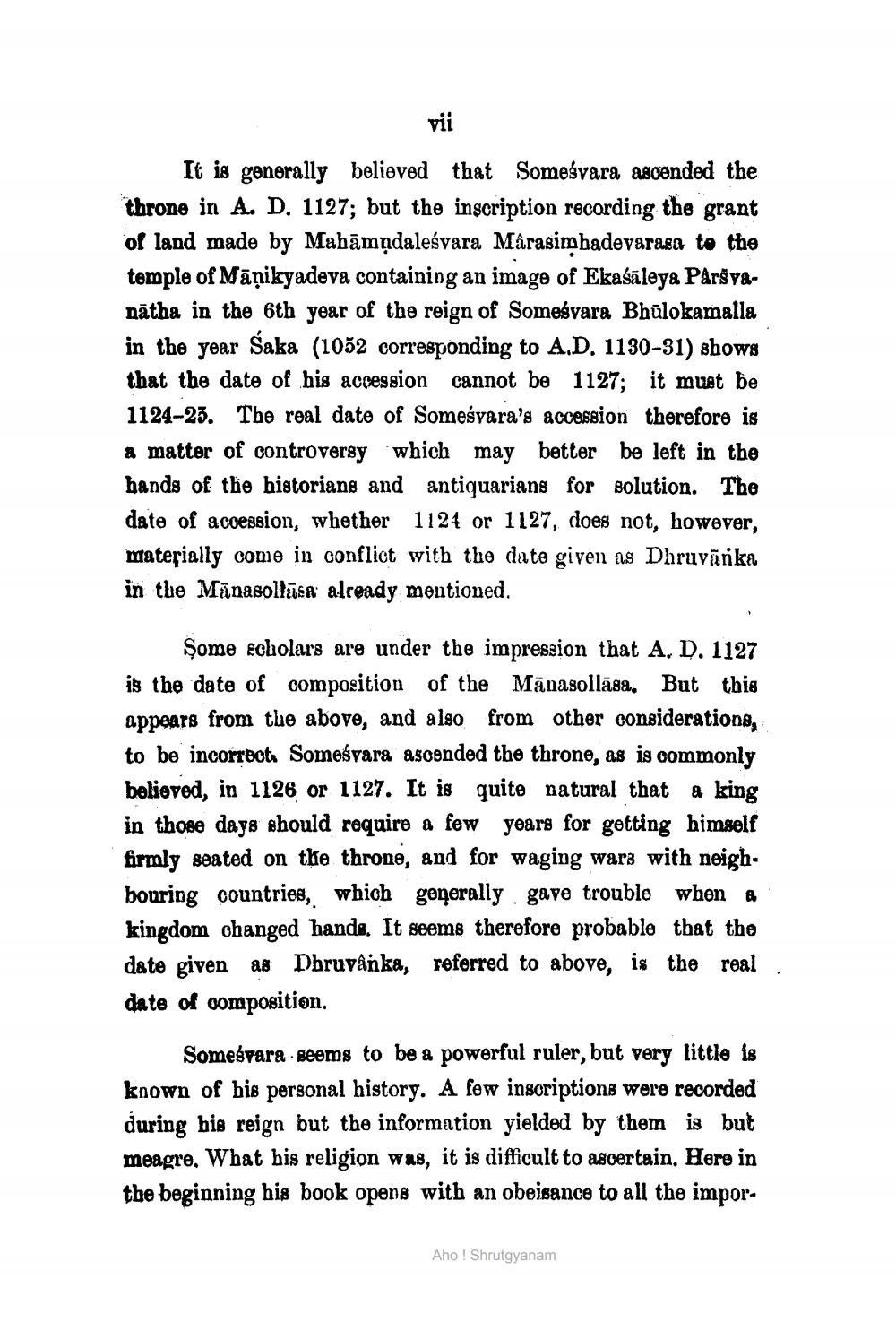________________
vii
It is generally believed that Someśvara ascended the throne in A. D. 1127; but the inscription recording the grant of land made by Mabāmặdaleśvara Mârasimhadevaraga to the temple of Māņikyadeva containing an image of Ekaśāleya Paršvanātha in the 6th year of the reign of Someśvara Bhūlokamalla in the year Saka (1052 corresponding to A.D. 1130-31) shows that the date of his accession cannot be 1127; it must be 1124-23. The real date of Someśvara's accossion therefore is a matter of controversy which may better be left in the hands of the historians and antiquarians for solution. The date of acoession, whether 1124 or 1127, does not, however, materially come in conflict with the date given as Dhruvanka in the Mānasollāca already mentioned.
Some echolars are under the impression that A. D. 1127 is the date of composition of the Mānasollāsa. But this appears from the above, and also from other considerations, to be incorrect. Someśvara ascended the throne, as is commonly believed, in 1126 or 1127. It is quite natural that a king in those days should require a few years for getting himself firmly seated on the throne, and for waging wars with neighbouring countries, which gezerally gave trouble when a kingdom changed hands. It seems therefore probable that the date given as Dhruvanka, referred to above, is the real date of composition.
Somebvara - seems to be a powerful ruler, but very little is known of his personal history. A few inscriptions were recorded during his reign but the information yielded by them is but meagre. What his religion was, it is difficult to ascertain. Here in the beginning his book opens with an obeisance to all the impor
Aho ! Shrutgyanam




